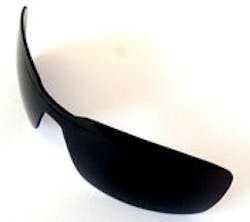PLC Perspectives: It's All About Data
What's happened in the past 25 years in the land of automation and PLCs? I asked around.
You start with the inventor himself, Dick Morley. He thinks the philosophy of the PLC hasn't changed nor has it improved. He challenges vendors to stick to the "appliance," and not get enamored with computational hardware that provides all the bells and whistles. So the only difference between then and now: bells and whistles.
By keeping the appliance simple, security isn't an issue. And, he says, beware of standards. They are not all good.
I enlisted the opinions of Jeff Payne from AutomationDirect, Benson Hougland at Opto 22, Cindy Hollenbeck with SoftPLC, and Shane Novacek at Beckhoff Automation. These companies are examples of the changing landscape of automation. Siemens and Rockwell Automation rule PLC World, but these firms try to do things differently. They weren't around 25 years ago in the capacity that they are in now.
The main fabric of their mostly similar opinions centers on commercial technology, networking, access to data, and a multi-talented controller.
The other common theme is that controllers are really computers, which we weren't allowed to say 25 years ago. The use of commercially available technology allowed speeds and processing power to go up exponentially. Payne says this development alone allowed for smaller-footprint PLCs to be as effective as any large chassis-based PLC from yesteryear.
Hougland agrees. The capability of smaller controllers increased to the point of being able to be put to use in any application. Novacek says this allows Beckhoff to create a better integrated and synchronous system. Beckhoff's bread and butter is motion control, so this is pretty important to them.
Novacek also states that it's software that has moved automation forward. No one else mentioned software other than Hollenbeck. She believes that using a standard-based operating system like Linux allows SoftPLC to adapt quickly to changing market conditions at a much lower cost now. She also recognizes that increased capability at the I/O level takes the focus away from the main controller, and with this level of sophistication, a PLC might not be needed.
With this distributed intelligence, Hougland says, Opto 22 puts its brains in a distributed architecture. Controllers still have a role, but single points of failure are gone.
These distributed systems exist because of the rise of industrial Ethernet and the development of protocols. Common transport layer allows interconnection of devices using the same protocols. Ian Verhappen of Industrial Automation Networks told me that since the advent of Ethernet on the plant floor, the number of protocols has ballooned to almost 20.
All participants agree that networking and its low entry cost has the biggest effect on automation. Hougland adds that wireless networking allows access to previously inaccessible areas. And why would one want access to all of these areas? Data.
This one reason has driven the field of automation more than anything. If you need information from device X you have to connect to it. If you have 10,000 devices, you need processing power. If these devices are scattered around, you need distributed intelligence, and you need the software to access this data and format it in a meaningful way.
Payne says access to data is a No. 1 customer requirement, regardless of the package size.
Hollenbeck and SoftPLC have embraced open I/O networks, which allow them to get to data from anyone's network. Of course, Opto 22 started out as an I/O company, so they know the value of interfacing to anything and giving access to anyone who wants it.
So have we really changed? I'm unconvinced that we have. We are doing things with faster hardware, standards-based networks, open protocols, and the ability to do just about anything. We have evolved, but I think incrementally. Order-of-magnitude change has come only from the land of data.
And we have so much of it, one wonders what to do with it.


